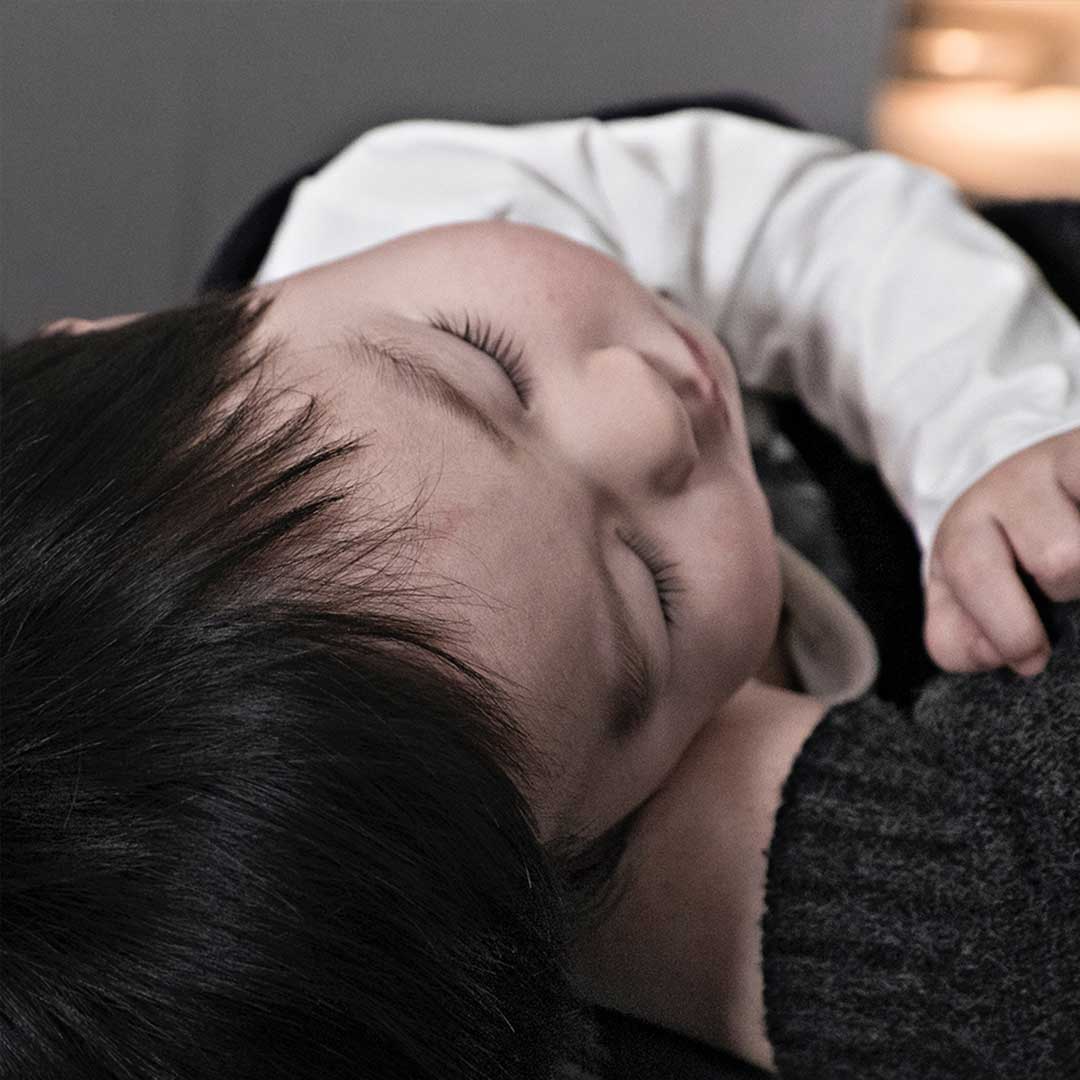Drowsy But Awake — The Cornerstone of Successful Sleep Training
The term “Drowsy But Awake” comes up in just about every piece of advice about sleep coaching. But just what does it mean? Newborns drift in and out of sleep in short cycles, while older babies and toddlers consolidate into more regular patterns. The minutes before they drift into slumber are crucial. How we facilitate those moments is the cornerstone of sleep training or coaching.
But what exactly is the right amount of drowsy? And how do you get there? Here are a few key points to remember:
- It’s OK to soothe a newborn to sleep
- Around six months, a baby is capable of self-soothing
- A good bedtime routine will help soothe a baby
- A baby who can fall asleep independently can fall BACK asleep during the night
Newborn Sleep
Newborns aren’t born with the skills to self-soothe. We rock, feed, and hold them to sleep, and that’s perfectly ok. Their internal clocks are not developed yet, and gradually they will learn the difference between night and day. Eventually their tiny sleep cycles will consolidate, but until about four months, parents and caregivers soothe their babies to sleep.
Baby Sleep
At around four to six-months-old, babies begin to develop their internal clock. They begin to produce melatonin, the sleep hormone. Melatonin is triggered by sleep cues like darkness at night, and bedtime routines. It’s around this time that most full-term babies are ready to sleep through the night.
Drowsy but awake at this point really means that a child is fed, dry, warm, loved, and aware they are being placed in their crib. Honesty, the phrase should probably be changed to calm but awake. A soothing routine and an ideal bedtime are great habits to begin teaching self-soothing. This routine, and calm behavior from parents and caregivers will set the stage for sleep training.
Is your baby ready for night-weaning?
Read: Night Weaning After Six Months: How to Gently End Night Feedings
Beginning to Sleep Coach
When a family decides to begin sleep training, usually around six months, it’s best to start at bedtime. Take note of sleepy cues in the days and weeks before beginning — fussiness, eye-rubbing, staring, quieting, losing interest in play, and yawning are examples of signs a baby is ready for bed. This is their ideal bedtime.
On a day with excellent naps, begin a soothing bedtime routine about 20-30 minutes before their ideal bedtime. After the bath, stories, and cuddles, they will go into their crib calm but awake. There may be crying — but using physical and verbal reassurance will help them to fall asleep. They will need less help as the routine is consistently followed.
Wondering about a good schedule for your baby?
Read: Sample Schedules: Sleep and Naps From 6 Months to Preschool
So, What Is Drowsy But Awake, Exactly?
Your child should go into their crib calm and not too sleepy. You want them fed, dry, warm, loved and awake enough to know what’s going on. If her eyes are drooping, her body is kind of limp or she falls asleep in less than five minutes, she was probably too drowsy. Try the next night with a slightly more calm but awake child.
Not sleepy enough? Make sure you have figured out the ideal bedtime, that the afternoon nap didn’t go too late, and that the calming bedtime routine was, in fact, calming.
Ideally have your bedtime routine in your child’s room with the lights on and shades down. Have quiet play, read a book or a final feeding —but no falling asleep during feeding — and then kisses, into the crib or bed and lights out.
Babies Learn to Self-Soothe
Research shows it takes the average person 15-20 minutes to fall asleep. What do YOU do during this time? Some parents read, take a bath, meditate, or watch TV. Children, too, have favorite soothing habits. They may play with stuffed animals, suck their thumb, look at books, twirl their hair, rub their blanket, hum, rock, or babble. Remember, with sleep, it is not what we do for our children, but what they learn to do for themselves. Offering your child the opportunity to develop his own sleep triggers will become a tool he will use for the rest of his life.
Remember that bedtime is the easiest time for children to learn to put themselves to sleep. It is when your baby or child has their whole day behind them. Once they master the skill at bedtime, it will be easier to put themselves back to sleep during the night. If you put your child to bed already asleep at bedtime — or almost there —and then ask them to put themselves back to sleep unassisted during the night, you are more likely to see lots of crying and not much progress in your sleep coaching efforts.

Encouraging Self-Soothing
Once you have figured out the ideal bedtime window and become familiar with what “drowsy but awake”, or “alert, but calm” looks like, you can further help your baby learn to fall asleep independently.
After your normal nighttime routine, offer your child a blanket, stuffy, lovey, soft music, or books to quietly be with in his crib or bed*. Encourage this habit so it will become relaxing for your child as he learns to use these items to fall asleep on his own. Just the sight or smell of these things can act as a cue that it’s time to go to sleep.
Once he has learned this skill at bedtime, your child will be able to self-soothe and fall back asleep if he wakes up overnight.
*Note – the American Academy of Pediatrics recommends against anything in the crib until 12 months. You can read all of their safe sleep guidelines here.
Does your baby have a lovey?
Read why that’s a great idea: Why Your Baby Needs a Transitional Object
Night Waking
Is your baby still waking up a lot at night? First, make sure they are napping enough during the day. Then make sure they are going to bed calm but awake, and during their ideal bedtime window. It’s tempting to put your baby down very drowsy in order to avoid any tears when you start sleep coaching, but it will be difficult to make any progress.
If she isn’t the one putting herself to sleep at bedtime, she won’t know how to resettle herself when she wakes up at night. That’s why teaching this skill first at bedtime, even if it’s difficult at first, is valuable to your overall sleep coaching efforts. It’s more work up front, but bedtime is the easiest time to teach the skill of self-soothing to sleep.
Using the Shuffle
When you begin to put your baby down to bed awake after their soothing bedtime routine, they will probably cry. It is difficult not to jump in and rescue them from frustration, but don’t be too quick to do that. We need to give our children the opportunity to find what relaxes them and helps them fall asleep.
Sleep is a learned skill. Don’t worry, but don’t get her out and start the whole routine again. You can use Sleep Lady techniques by staying nearby and offering physical and verbal reassurance until she is asleep.
Once you and your child have mastered the skill of “drowsy but awake”, or “calm but awake” at bedtime, you’re most of the way there! The verbal and physical reassurance you give them while they are learning to fall asleep is the last step to them falling asleep independently and resettling themselves overnight. Before you know it, you will have a baby who sleeps through the night, which will assure everyone in the house is getting the sleep they need.




